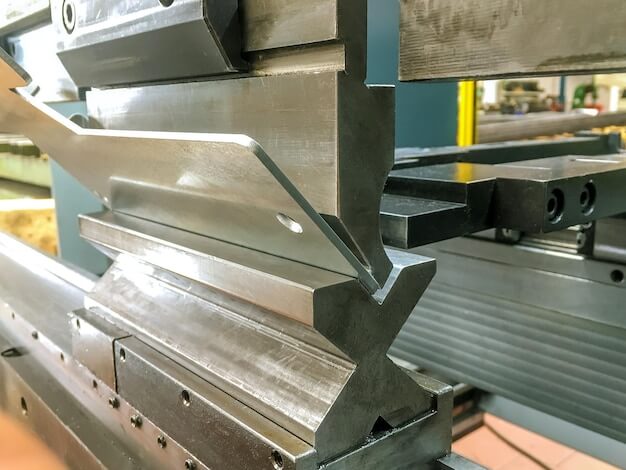Introduction to Manufacturing Costs and CNC Machining Solutions
Manufacturing costs significantly impact businesses, encompassing expenses related to materials, labor, and operations. These costs determine the final price of products, affecting competitiveness and profitability. CNC machining emerges as a strategic solution to reduce these costs. This advanced manufacturing technique offers precision and efficiency by automating the material removal process through computer-controlled cutting tools. Key components of CNC machining include:
- Computer Numerical Control (CNC) System: The brain of the machine, controlling the movement and operation of the cutting tools based on programmed instructions.
- Cutting Tools: Various tools, such as mills and lathes, designed to cut and shape the material into the desired form.
- Workpiece: The raw material (metal, plastic, etc.) that is being shaped by the CNC machine.
By leveraging CNC machining, businesses can achieve more consistent quality, reduce waste, and minimize the need for manual labor, leading to significant cost savings in the manufacturing process.
Understanding CNC Machining
CNC machining stands for Computer Numerical Control machining, a process used extensively in the manufacturing sector. It involves the use of computers to control machine tools, which can include lathes, mills, routers, and grinders. The primary importance of CNC machining lies in its ability to reduce manufacturing costs. This is achieved through:
- Precision: CNC machines operate with high precision, reducing the margin of error and waste material.
- Efficiency: Automated control increases production speed and reduces the need for manual labor.
- Flexibility: The ability to quickly change machine settings allows for the production of custom and complex parts without significant downtime.
For example, a company specializing in aerospace components can use CNC machining to produce parts with complex geometries that would be difficult and costly to make with traditional manufacturing methods. This not only saves on material costs but also significantly reduces the time taken from design to production.
The Challenge of Material Costs in CNC Machining
Material selection significantly impacts the overall costs in CNC machining. The choice of material not only affects the machining process but also the cost efficiency of the production. For instance:
- Aluminum is often chosen for its lightweight and good machinability, making it cost-effective for large volume productions.
- Stainless Steel, while offering superior strength and corrosion resistance, comes at a higher cost due to its tougher machining requirements.
Choosing the right material involves balancing between performance requirements and cost implications. For example, using aluminum instead of stainless steel for parts that do not require high strength or corrosion resistance can significantly reduce costs.
Benefits of Multi-Material CNC Machining
Multi-material CNC machining offers the advantage of creating complex parts with varying material properties in a single operation. This reduces the need for assembly and improves overall part accuracy. It also enables the production of hybrid components with optimized material characteristics, leading to enhanced performance and functionality.
Benefits of Multi-Material CNC Machining
Multi-material CNC machining offers significant advantages in manufacturing, enhancing both the efficiency and quality of the production process. This technique allows for the simultaneous use of different materials, leading to:
- Cost Savings: By integrating multiple materials in a single machining operation, manufacturers can reduce machine setup times and material wastage, translating into lower production costs.
- Improved Product Quality: The precision of CNC machining ensures high-quality finishes and tighter tolerances, resulting in superior product quality that meets stringent industry standards.
- Increased Efficiency: Multi-material machining streamlines the production process by combining operations, which significantly speeds up manufacturing times and boosts productivity.
A real-world example of these benefits can be seen in the aerospace industry, where companies like Boeing have adopted multi-material CNC machining strategies. This adoption has enabled them to manufacture complex aerospace components more efficiently and with higher quality, leading to improved performance and durability of their aircraft.
Implementing Multi-Material CNC Machining Strategies
To start utilizing multi-material CNC machining, businesses must first identify the specific needs of their projects, including the types of materials that will be used and the complexity of the designs. The steps for implementation include:
- **Assessment of Design Requirements:** Understand the project’s technical requirements and how different materials can meet these needs.
- **Material Selection:** Choose materials based on their properties, such as strength, flexibility, and cost. For instance, combining metals for structural parts with plastics for lightweight components.
- **Machinery Evaluation:** Ensure the available CNC machinery can handle the selected materials and the required precision. Multi-axis machines are often preferred for their versatility.
- **Pilot Testing:** Conduct small-scale tests to evaluate the machining process, adjust parameters, and ensure quality before full-scale production.
Choosing the right materials and machinery involves considering the compatibility of materials with the machine’s capabilities, the cost-effectiveness of the material choices, and the desired properties of the final product. For example, a business might choose aluminum for its machinability and strength-to-weight ratio for aerospace components, while ensuring their machinery is equipped with the appropriate tools and settings for precision machining of aluminum.
Other Articles You Might Enjoy
- CNC Turning and Diverse Types of Rivets Production( casting holes Gabrielle)
Computer Numerical Control (CNC) represents a significant advancement in the field of manufacturing. Among several applications, CNC turning has revolutionized how we produce various devices and parts, including different types…
- Innovative CNC Machining for Custom Medical Instruments
Innovative CNC Machining for Custom Medical Instruments Computer Numeric Control (CNC) machining is an innovative automated process that utilizes computer software to control machine tools. The use of CNC machines…
- Online CNC Machining Service for Stainless Steel Components
Introduction to Online CNC Machining Services for Stainless Steel Components CNC (Computer Numerical Control) machining is a manufacturing process wherein pre-programmed computer software directs the movement of factory machines and…









